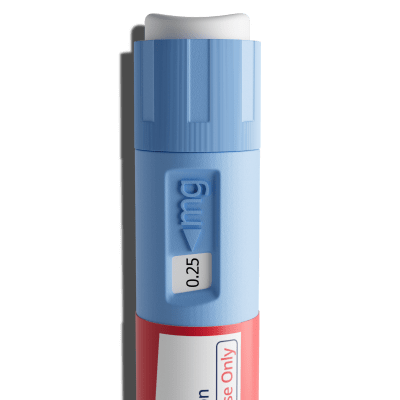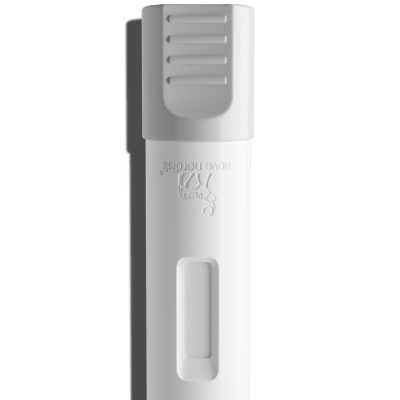Content
View weight loss medications
How to Get Rid of a Beer Belly

The term “beer belly” seems to have popped up in the 1940s and is really just a colloquialism for alcohol-related weight gain. Though it’s just a quip (the predecessor to “dad bod,” perhaps?), there is a link between drinking alcohol and gaining weight, especially in the midsection.
Some research shows a correlation between beer drinking and increased waist circumferences in men. Specifically, guys who drank about three pints of beer a day were more likely to have larger waistlines.
But, how much exercise someone gets, what they eat, how fast or slow their metabolism is, and whether or not they might have other underlying health issues can all play a role in weight management. We’ll go over all the details below.
Keep reading to learn what causes a beer belly and what you can do to get rid of one.
Content
7 Ways to Ditch the Beer Belly
While it’s not really possible to target weight loss in one specific part of your body, there are plenty of things you can do to jump start your weight loss goals. In fact, the best way to lose belly fat is to aim for overall weight loss. Without further ado, here’s how to lose a beer belly.
Weight loss, explained
1. Cut Portion Sizes
It may not be what you want to hear, but portion control really is key when it comes to weight loss. And yes, we’re talking food and booze here.
In one small 12-week study, people with obesity who had pre-measured meals lost more weight than those who didn’t. Portion control led to both weight loss and reduced visceral abdominal fat. (Visceral fat is the deeper fat that lines your internal organs around the midsection.
An easy way to cut your portions is to start by serving yourself around half as much as you normally would. Instead of filling your bowl up to the tippy top with spaghetti and meatballs, just go halfway.
Besides paying attention to serving sizes, here are a few ways to train yourself to control your portions better:
Use smaller plates and bowls
Drink more water before your meals and throughout the day
Pace yourself so you have time to figure out if you’re full before you keep eating
2. Pay Attention to Calories
Experts agree that to lose weight, you should create a calorie deficit by eating less and getting more physical activity. For weight loss, you should aim to eat about 500 fewer calories than you burn.
The amount of calories you need depends on factors like sex, weight, activity, and age.
If you have a hard time keeping track of your snacking habits or tend to indulge without realizing it, jotting down what you eat throughout the day can help you eat more mindfully. Counting calories isn’t necessarily a good idea for everyone, but it can be an effective way to ensure you create a calorie deficit.
3. Eat a Balanced Diet
It’s not only about how much you eat — it’s also about what you eat. In other words, a healthy diet isn’t all about calorie counting. Make sure you’re getting enough whole grains, lean protein, fiber, and greens in your diet. Eating healthy foods helps your body keep blood sugar levels stable and helps minimize fat buildup.
4. Make Healthy Swaps
Drinking high-calorie beverages like alcoholic drinks or sodas can lead to weight gain because they add to your daily calorie count without filling you up or nourishing your body.
Decreasing your alcohol intake (and increasing your water intake) by just a little bit can make a difference.
One way to start making little changes is to swap out unhealthy foods and drinks with better alternatives. Instead of going for that extra cookie, try having a bite of dark chocolate and your favorite fruit.
5. Pace Your Alcohol Consumption
Cutting down on spirits will reduce the overall amount of calories you’re ingesting, which can help with weight loss. Though you don’t necessarily have to stop drinking altogether, drinking alcohol less often will help. And lead to other health benefits. For example, you might notice your skin clearing up and your sleep improving.
6. Squeeze In Extra Steps
Though diet is key to weight loss, getting enough daily physical activity is also crucial.
Research shows that even if someone can’t meet the recommended exercise guidelines, squeezing in quick bouts of exercise throughout the day can help with weight management. Decreasing the amount of time you spend being sedentary will also reduce visceral fat accumulation.
A few lifestyle changes, like walking to the store instead of taking a car, or taking a brisk lap around the block, can help you increase your overall physical activity and fitness levels. Any activity that gets your heart pumping faster or your muscles burning hotter is a good move.
7. Amp Up Your Workout Routine
If you already have a pretty consistent and thorough workout routine but you still notice weight gain, try upping the ante a little.
One review noted that any increase in exercise will help reduce visceral abdominal fat. Another way to frame it: the more you exercise, the more fat-burning you engage in. So if you find yourself with an extra 15 minutes to kill, opt for some kind of physical activity.
To improve cardiovascular health and overall fitness, you could try doing some:
Running, light jogging, or brisk walking
Dancing
Swimming
Hiking
Cycling
To build more muscles, which helps burn more fat, try incorporating strength-training exercises:
Squats
Weight lifting
Lunges
Planks
Crunches
Weight loss treatment for where you are now
What Causes a Beer Belly?
Beer. Just kidding…there’s a lot more to it than that.
Drinks increase overall caloric intake.
Knocking back an extra pint or two will add more calories to your overall daily intake.
Most beers are between 50 to 150 calories per serving. Beer is also pretty high in carbs. Carbs get converted into glucose and your body uses glucose as energy. But when you consume extra carbs, your body stores them as fat instead. The same pattern is true for other alcoholic drinks, even though beer seems to get a worse rep.
Also, when you’re drinking, you might be tempted to eat more. So it’s not just the alcoholic drink adding calories to your tally, it’s that drinking can change your eating habits.
Alcohol messes with your system.
Some research suggests that drinking more might make you gain weight because it interferes with the way your body breaks down fat. This is because your body is primed to see alcohol as a toxin, and your liver and pancreas (both important organs in the digestion process) focus on breaking it down instead of metabolizing fat.
In the short term, it means that while you’re drinking, your body focuses on filtering out the alcohol instead of metabolizing food and converting it into energy. In the long term, excessive drinking can result in accumulating more fat, among other health issues. It varies from person to person and also depends on the level of alcohol consumption.
It boils down to genetics.
You might be wondering why beer bellies are more common in men than women. Studies tell us it comes down to differences in genetics and hormones.
Men tend to have more visceral fat. As we mentioned before, visceral fat is stored inside the abdominal cavity, right outside the internal organs in the midsection (like the liver and intestines).
Subcutaneous fat, on the other hand, is the fat that accumulates right under your skin.
How to Hide a Beer Belly
We’re all about embracing what’s yours and feeling confident in your skin. Whether that means sticking to your current wardrobe or changing things up, just do you.
If you are curious about how to hide your beer belly while you start implementing these lifestyle changes, these styling tricks can come in handy:
Wear looser pieces. If you’ve gone up a few sizes, wearing clothes that don’t feel too tight will be much more comfortable. They won’t accentuate areas that you’d rather disguise.
Tailor clothing. Tailoring your clothes can be a great way to ensure they’re well-suited to your body.
Reach for darker colors. They are better at disguising perceived imperfections.
Play with proportions. A great jacket, loose shirt, slim pants, and cool shoes can work wonders.
Dress for yourself. Ultimately, there are no rules when it comes to style. Sure, horizontal stripes may not be as “flattering” as vertical ones, but if the shirt is well-tailored or simply makes you feel your best, you will stand up a little straighter and exude confidence
When to See a Doctor
If you’re still having a hard time losing weight after overhauling your lifestyle, it might be worth looking into other options. Try talking to a doctor about weight loss medications, like metformin and Ozempic, to see if they might be a good fit for you.
Of course, it’s also worth mentioning that there are quite a few reasons why you might carry more weight in your midsection, and drinking a lot of beer is just one of them.
We also want to note that if you think you might have an alcohol use disorder, there are many resources out there to help you make changes.
Personalized weight loss for real progress
Final Thoughts
Taking a holistic approach to wellness will lead to a healthy weight and healthy lifestyle. Eating and drinking more mindfully as well as staying active are the best remedies for weight gain.
Also, it’s helpful to remind yourself that change won’t happen overnight, and you can’t easily control where on your body you lose weight. If you implement the healthy lifestyle we went over, you could start noticing a difference in a few weeks.
If you want to learn more about weight loss medications, consider taking our free online assessment to see if you qualify.
14 Sources
- Schütze M, et al. (2009). Beer consumption and the ‘beer belly’: Scientific basis or common belief? https://www.nature.com/articles/ejcn200939.
- Schröder H, et al. (2007). Relationship of abdominal obesity with alcohol consumption at population scale. https://pubmed.ncbi.nlm.nih.gov/17885722/.
- Liu F, et al. (2017). Factors associated with visceral fat loss in response to a multifaceted weight loss intervention. https://www.ncbi.nlm.nih.gov/pmc/articles/PMC5889055/.
- NIH News in Health. (2023). Healthy weight control. https://newsinhealth.nih.gov/2022/12/healthy-weight-control.
- Fresán U, et al (2016). Substitution models of water for other beverages, and the incidence of obesity and weight gain in the SUN Cohort. https://www.mdpi.com/2072-6643/8/11/688.
- Recchia F, et al. (2023). Dose–response effects of exercise and caloric restriction on visceral adiposity in overweight and obese adults: a systematic review and meta-analysis of randomised controlled trials. https://bjsm.bmj.com/content/57/16/1035.
- Ando S, et al. (2020). The association of daily physical activity behaviors with visceral fat. https://www.sciencedirect.com/science/article/abs/pii/S1871403X20305998.
- Ismail I, et al. (2012). A systematic review and meta-analysis of the effect of aerobic vs. resistance exercise training on visceral fat. https://onlinelibrary.wiley.com/doi/10.1111/j.1467-789X.2011.00931.x.
- Boutcher, SH. (2011). High-intensity intermittent exercise and fat loss. https://www.hindawi.com/journals/jobe/2011/868305/.
- Beer: Calories and calorie chart. (n.d.) https://www.calories.info/food/beer.
- Yeomans MR. (2010). Alcohol, appetite and energy balance: Is alcohol intake a risk factor for obesity? https://www.sciencedirect.com/science/article/abs/pii/S0031938410000259.
- Wilson DF, et al. (2020). Ethanol metabolism: The good, the bad, and the ugly. https://www.sciencedirect.com/science/article/pii/S0306987720300797#s0005.
- Karastergiou K, et al. (2012). Sex differences in human adipose tissues – the biology of pear shape. https://www.ncbi.nlm.nih.gov/pmc/articles/PMC3411490/.
- Shah RV, et al. (2014). Visceral adiposity and the risk of metabolic syndrome across body mass index: the mesa study. https://www.sciencedirect.com/science/article/pii/S1936878X14007347.
Editorial Standards
Hims & Hers has strict sourcing guidelines to ensure our content is accurate and current. We rely on peer-reviewed studies, academic research institutions, and medical associations. We strive to use primary sources and refrain from using tertiary references. See a mistake? Let us know at blog@forhims.com!
This article is for informational purposes only and does not constitute medical advice. The information contained herein is not a substitute for and should never be relied upon for professional medical advice. Always talk to your doctor about the risks and benefits of any treatment. Learn more about our editorial standards here.
Craig Primack, MD, FACP, FAAP, FOMA
Dr. Craig Primack MD, FACP, FAAP, FOMA is a physician specializing in obesity medicine.
He completed his undergraduate studies at the University of Illinois and subsequently attended medical school at Loyola University — The Stritch School of Medicine.
He completed a combined residency in Internal Medicine and in Pediatrics at Banner University- Phoenix, and Phoenix Children's Hospital. He received post-residency training in Obesity Medicine and is one of about 7,000 physicians in the U.S. certified by the American Board of Obesity Medicine.
In 2006, Dr. Primack co-founded Scottdale Weight Loss Center in Scottsdale, Arizona, where he began practicing full-time obesity medicine. Scottsdale Weight Loss Center has grown since then to six obesity medicine clinicians in four locations around the greater Phoenix Metropolitan area.
From 2019–2021, he served as president of the Obesity Medicine Association (OMA), a society of over 5,000 clinicians dedicated to clinical obesity medicine. He has been on the OMA board since 2010, currently serving as ex-officio trustee.
Dr. Primack routinely does media interviews regarding weight loss and regularly speaks around the country educating medical professionals about weight loss and obesity care. He is co-author of the book, “Chasing Diets.”
Publications
Bays, H., Lazarus, E., Primack, C., & Fitch, A. (2022). Obesity pillars roundtable: Phentermine — Past, present, and future. Obesity Pillars, 3, 100024. https://www.sciencedirect.com/science/article/pii/S2667368122000158
Primack C. (2021). Obesity and Sleep. The Nursing clinics of North America, 56(4), 565–572. https://www.sciencedirect.com/science/article/abs/pii/S002964652100075X?via%3Dihub
Primack C. (2018). A review and critique of published real-world weight management program studies. Postgraduate medicine, 130(6), 548–560. https://www.tandfonline.com/doi/abs/10.1080/00325481.2018.1498280
Swanson, E., & Primack, C. (2017). Behavior Modification: A Patient and Physician's Perspective. Advances in therapy, 34(3), 765–769. https://www.ncbi.nlm.nih.gov/pmc/articles/PMC5350202/
Primack, C. (2012). Two New Drugs Approved for Weight Loss Treatment. Bariatric Times, 9(8), 11. https://bariatrictimes.com/two-new-drugs-approved-for-weight-loss-treatment/




